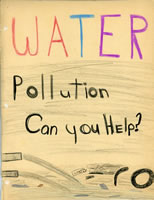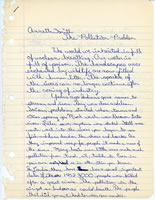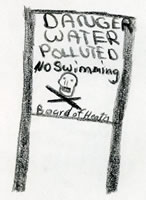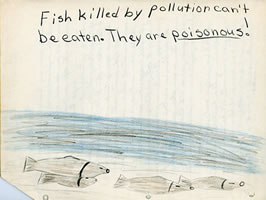Annie in Intermediate School (Grades 4-6): 1968-1970
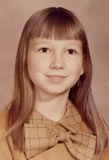 By the late 1960s Annie has moved to the Iowa and is attending intermediate school. She still loves the adventure whether it's a hike in the woods or her favorite adventure books: My Side of the Mountain by Jean Craighead George which takes her to the mountains and From the Mixed-up Files of Mrs. Basil E. Frankweiler by EL Konigsburg which takes her inside the Metropolitan Museum of Art.
By the late 1960s Annie has moved to the Iowa and is attending intermediate school. She still loves the adventure whether it's a hike in the woods or her favorite adventure books: My Side of the Mountain by Jean Craighead George which takes her to the mountains and From the Mixed-up Files of Mrs. Basil E. Frankweiler by EL Konigsburg which takes her inside the Metropolitan Museum of Art.
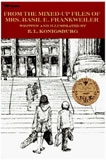

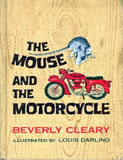
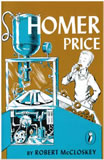
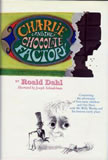
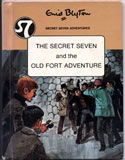 Maintaining her own library in the basement including spine labels, checkout cards, date stamps, and a card catalog, Annette catalogs the family dictionary, encyclopedias, magazines, and books. Like many girls her age, her personal library has many Nancy Drew books and other adventure series.
Maintaining her own library in the basement including spine labels, checkout cards, date stamps, and a card catalog, Annette catalogs the family dictionary, encyclopedias, magazines, and books. Like many girls her age, her personal library has many Nancy Drew books and other adventure series.
Annette creates a secret club based on the Secret Seven mystery series by Enid Blyton and invents codes, languages, rituals, and guidelines for spying on adults. She reads books about invisible ink, magic tricks, and solving mysteries.
Questioning & Exploration
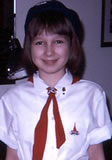 Annie has grown increasingly concerned about the future of the the world and particularly the environment. She's active in Campfire Girls and enjoys spending time outdoors. Annie is aware of the nature around her including the local plants and animals. Although she hates to weed, she enjoys being involved with the family garden of flowers, beans, corn, carrots, tomatoes, cucumbers, and radishes. Through these experiences, she learns the importance of water and soil quality.
Annie has grown increasingly concerned about the future of the the world and particularly the environment. She's active in Campfire Girls and enjoys spending time outdoors. Annie is aware of the nature around her including the local plants and animals. Although she hates to weed, she enjoys being involved with the family garden of flowers, beans, corn, carrots, tomatoes, cucumbers, and radishes. Through these experiences, she learns the importance of water and soil quality.
Annie also enjoys natural crafts such as making shadow boxes filled with seeds, woodworking, and recycling household materials in artwork.
One day she reads an issue of her dad's U.S. News and World Report magazine that is filled with articles about legislative issues and growing concerns about pollution. Television news reports highlight the water pollution issues facing the Great Lakes and the smog hazards in New York City and Los Angeles.
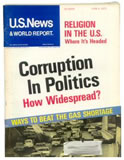
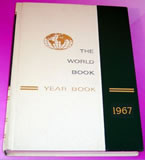
When asked to write a report on a science topic, she immediately chooses the topic of pollution.
She pours over the World Book Encyclopedia and waits each year for The World Book Year Book to arrive hoping that it will contain the answers. She fears that pollution will kill all the plants and animals. She wonders what people will eat if all the food is contaminated.
Since her pollution project a few years ago, Annie's vocabulary has expanded. Her new list of pollution words includes: chemical spill, hazardous waste, contamination, poison, taint, harmful, and carcinogen.
Annie begins her quest by generating a list of questions. She quickly eliminates the low level questions she can already answer and selects the following three questions as her focus.
- Has there always been pollution?
- When and where did the problem start?
- Why are people so interested in pollution today if they didn't care in the past?
Annie goes to the school library to find books and magazines that might shed light on this growing national issue. She finds more books on the topic than she did a few years ago. Many of them have pretty new covers, but contain sad photographs of filthy water and dead animals. As suggested by her teacher, Annie starts a new page of notes for each of her three questions. Annie loves her new colored marker pens and selects a different color for each page. She also creates a separate page to record all the materials she's using including books and magazines. A worksheet provided by her teacher is used to ensure that she properly cites each source.
Based on her initial exploration, Annie becomes overwhelmed with information. Although she's collected information to address her questions, she's interested in the larger issue of pollution and is having a hard time deciding what to do next. The librarian notes her frustration and talks with her about the options. By helping Annie reflect on her progress and interests, the instructional specialist helps her prioritize her goals for the project. Annie decides that she can't deal with all the types of pollution at once. She decides to narrow her focus to water pollution.
Next, Annie brainstorms new questions specifically aimed at water pollution.
- Is most of the pollution around cities and industry?
- What kinds of pollution are found in water?
- Where does this waste come from?
- Why do sewer systems dump waste into the waterways?
- Are chemicals are poisoning plants and animals?
- What plants and animals are being poisoned?
She jumps into the information with renewed interest, but again is overwhelmed by the wealth of information. For a second time, she narrows her topic. This time Annie focuses on the history, causes, and effects of water pollution.
Assimilation & Inference
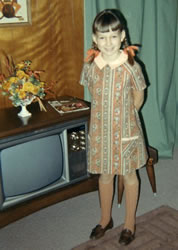 As she collects information, Annie find that visuals help her remember key ideas and see relationships. She creates a timeline to trace the history of water pollution and gain a perspective on time. A cause and effect chart is used to record connections between the major water pollution issues and their impact on the environment. In addition, Annie develops a sketchbook of drawings inspired by her project. She quickly realizes that she'll have much more than the required three-page paper. She's excited about her progress and decides to keep organizing and building her resources, then go back later to write the final report.
As she collects information, Annie find that visuals help her remember key ideas and see relationships. She creates a timeline to trace the history of water pollution and gain a perspective on time. A cause and effect chart is used to record connections between the major water pollution issues and their impact on the environment. In addition, Annie develops a sketchbook of drawings inspired by her project. She quickly realizes that she'll have much more than the required three-page paper. She's excited about her progress and decides to keep organizing and building her resources, then go back later to write the final report.
As she revisits her questions, notes, and visuals, she begins to see a pattern. Suddenly she makes a breakthrough in her thinking. Drawing attention to water pollution will not cause it to stop. Water pollution can be cleaned up, but it will continue for generations unless the conditions that cause water pollution are eliminated. People are the root cause of pollution. They have to be convinced to stop polluting.
After this revelation, she was ready to write and submit her short report. She must read her report aloud in class, so she wears her new dress made by her mother and her favorite penny loafers (see photo on right).
Samples from her original report can be seen below. Click the visuals below for a larger version.

After the project, Annie talks her parents into putting a bumper sticker on their Volkswagen Beetle from the USDA Forest Service campaign, "Give a Hoot. Don't Pollute."
Reflection
Annie is no longer a novice student information scientist. Although her skills must still be refined, she's able to apply existing skills and seek help when necessary.
Skills. Annie's increased vocabulary has allowed her to more easily read and understand the technical information related to her topic. These words have also helped Annie express her ideas in much more exact ways.
Scaffolding. Annie is beginning to apply strategies to the organization of information. Although she uses the technique that her teacher recommended of taking notes on separate pieces of paper, she incorporates her own strategy of color coding ideas. Annie uses the worksheet provided by her teacher as a guide for citing sources. Having learned to create timelines and cause/effect charts in earlier projects, she applies these techniques here. She enjoys drawing and views her sketchbook as a way to be creative while still focusing on work. All of these mechanisms for organization of information provide an environment conducive to assimilation and inference. It's unlikely that Annie's breakthrough would have happened without these transformational scaffolds.
Strategies. Rather than simply tell Annie to "narrow her topic," the instructional specialist guided her through a reflective process that helped her determine a focus for her project. By teaching her the thinking process behind narrowing a topic, Annie was able to do it again independently.
Realizations. Annie is beginning to recognize that being an information scientist goes beyond what is learned in school or required for a school report. She's started to enjoy the satisfaction of continuing beyond the requirements of a class in order to reach a personal goal or insight.
Standards
Information Literacy Standards Indicators (Selected from Information Power, AASL, 1998)
- Identified a variety of potential sources of information.
- Determines accuracy, relevance, and comprehensiveness of information.
- Selects information appropriate to the problem or question at hand.
- Organizes information for practical application.
- Produces and communicates information and ideas in appropriate formats.
- Designs, develops, and evaluates information products and solutions related to personal interests.
- Is competent and self-motivated reader.
- Develops creative products in a variety of formats.
Indiana Content Standards
- Explain that clear communication is an essential part of doing science (4).
- Explain how some products and materials are easier to recycle than others (4).
- Support statements with facts found in print and electronic media, identify the sources used, and expect others to do the same (4).
- Identify better reasons for believing something than "Everybody knows that.." or "I just know" and discount such reasons when given by others (4).
- Begin to evaluate the validity of claims based on the amount and quality of the evidence cited (5).
- Explain that technology extends the ability of people to make positive and/or negative changes in the world (5).
- Explain how the solution to one problem, such as the use of pesticides in agriculture or the use of dumps for waste disposal, may create other problems (5).
- Explain that in any particular environment, some kinds of plants and animals survive well, some do not survive as well, and some cannot survive at all (5).
- Give examples of different ways scientists investigate natural phenomena and identify processes all scientist use (6).
- Identify places where scientists work (6).
- Organize information in simple tables and graphs and identify relationships they reveal (6).
- Explain that fresh water, limited in supply and uneven in distribution, is essential for life and also for most industrial processes. Understand that this resource can be depleted or polluted, making it unavailable or unsuitable for life (6).
- Identify, explain, and discuss some effects human activities, such as the creation of pollution, have on weather and the atmosphere (6).
- Explain that human activities have changed the capacity of the environment to support some life forms (6).
Go to Key Terms and Strategies for information about how Annie might have handled key terms and strategies differently with less experience.
Times Have Changed
Over the past thirty years, access to information has changed dramatically. Today, you can go to the National Forest Service website and explore many materials for children including reading an online book on environmental concepts featuring Woodsy Owl from "Give a Hoot. Don't Pollute" fame.
Today, it's possible for students to go to the U.S. Environmental Protection Agency and learn about specific issues and collect data. There's even a section specifically geared to Elementary, Middle, and High School students.
Since the materials used in Annie's project came from the school library, they had been pre-selected. Although it's possible that some bias existed, it was much less of a concern before introduction of the Internet.
Although it has always been important for students to consider the authority and bias of resources, this is particularly true with the many perspectives and political views presented in websites. Some websites make their perspective very clear. For example the Earth Justice website states that they are "non-profit public interest law firm dedicated to protecting... a healthy environment. We bring about far-reaching change by enforcing and strengthening environmental laws on behalf of hundreds of organizations and communities."
On the other hand, it's not always easy for students to differentiate between fact and opinion. For instance, many non-profit organizations claim to not participate in lobbying activities. However when you look at their website FAQs, they do have a political agenda with a very specific perspective.
In many ways, the Internet would have expanded her interests even further. She loved the books by Jean Craighead George and EL Konigsburg and would have enjoyed learning more about these authors through their websites.
Technology tools would make Annie's visuals easier to create and more appealing. For example, Timeliner and Inspiration are two software packages that would help Annie construct diagrams and concept maps.
Related Resources
Air Defenders (http://www.airdefenders.org/)
E Magazine (http://www.emagazine.com/)
Earth & Sky (http://www.earthsky.org/) Example - Rain, Snow and Pollution & Air Pollution
Envirolink (http://www.envirolink.org/)
EElink (NAAEE) (http://eelink.net/)
Geography Action from National Geographic (http://www.nationalgeographic.com/geographyaction/habitats/)
Watershed TV (http://www.greentreks.org/watershedstv/index.asp)
Yes! Magazine (http://www.yesmagazine.org/)

